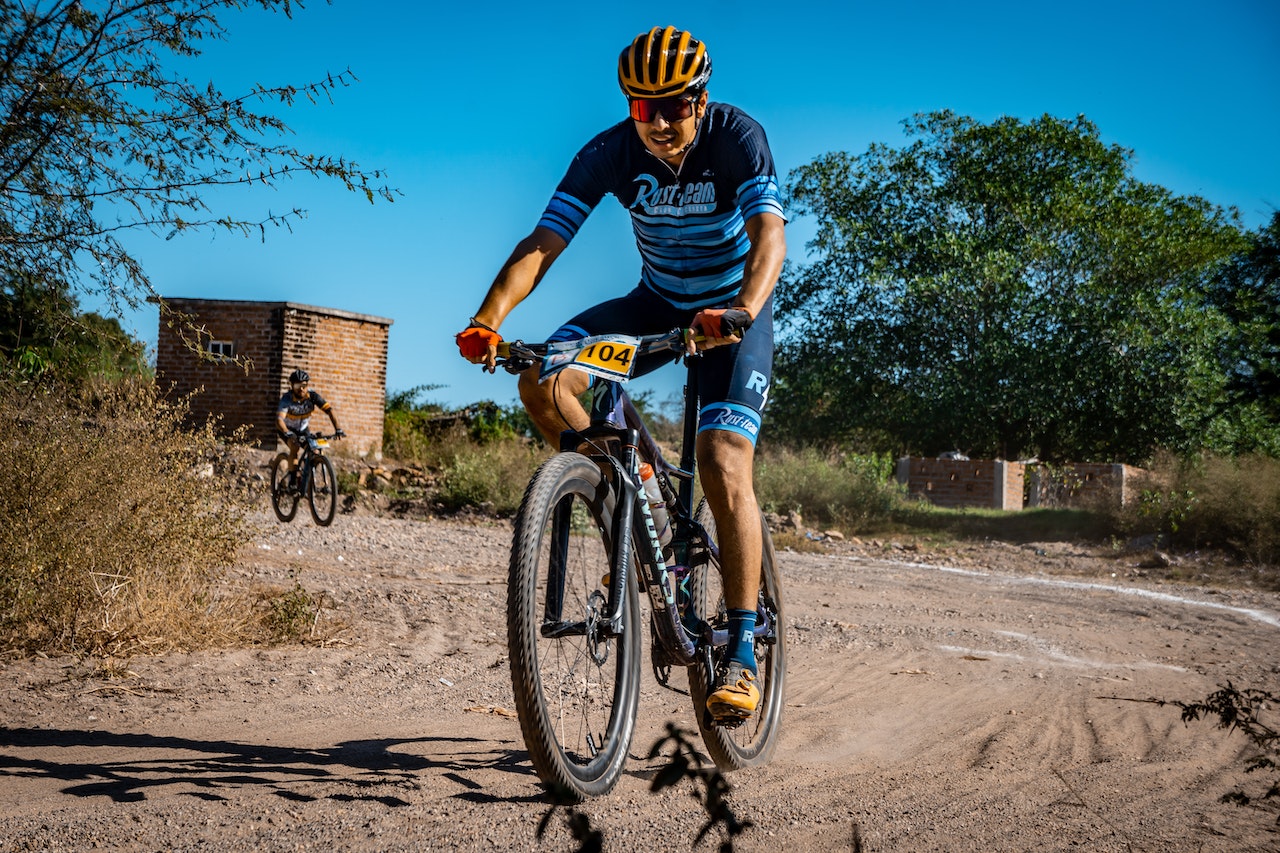Are you an avid cyclist or mountain biker who loves exploring new areas and taking on new challenges? Whether traveling across the globe or just hitting the trails close to home, learning to adapt to different terrain and conditions is vital to a successful and safe ride. Here are a few tips to help you navigate the unknown on your next cycling adventure.
Check Weather & Local Conditions
To familiarize yourself with the terrain, climate, and local conditions, it is essential to do your research ahead of time when planning to ride in a new area. The first step should be to check the weather forecast for the day so you can plan your ride accordingly. This may include bringing the proper clothing for the weather, such as packing a raincoat or extra layers for colder temperatures. Knowing the weather can also help you plan a route that does not include roads that may become hazardous due to rain or other weather conditions.
Prepare for Unexpected Changes
Even if you have done your research and are aware of the weather ahead of time, it is still essential to be prepared for unexpected conditions while riding. This includes being mindful of the terrain and conditions in the area you are riding, such as trails that may become muddy after rain or roads with potholes. Additionally, be aware of any wildlife in the area or potential construction that could block your path. Taking a few minutes to survey the site before you start riding can help you identify any potential hazards that you may encounter.
Know the Rules of the Road
When riding in a new area, it is vital to be aware of any rules and regulations that may differ from what you are accustomed to at home. This includes being aware of any local laws regarding the use of roads and trails, as well as any speed limits or other restrictions. Additionally, be mindful of the right-of-way and any parking regulations that are in place. Familiarizing yourself with the local laws and rules can help you stay safe and avoid penalties.
Carry the Necessary Supplies
While riding in an unfamiliar area, carrying all the necessary supplies with you in case of an emergency is essential. This includes items such as a spare tire, a repair kit, and extra water or snacks. Additionally, carrying a fully charged phone is a good idea in case you need to call for help or locate a nearby medical facility. Taking the time to ensure that you have all the necessary supplies can give you peace of mind while you are out on the road.
Research the Area’s Trails
When riding in a new area, it is vital to research the terrain and conditions that you’ll be riding in. This will help you to anticipate the type of riding experience you’ll have and what kind of clothing, equipment, and supplies you need. Knowing the type of trail you’ll be on, and its difficulty level is vital to having an enjoyable ride.
Research Surrounding Weather Conditions
Weather can be a significant factor in the type of riding experience you’ll have. It’s essential to check the current conditions of the area you’re riding in and the projected weather for the days you’ll be out. Knowing what to expect will help you plan accordingly and prepare the necessary riding gear, such as rain or cold weather gear, if needed.
Investigate the Area’s Trails
Before hitting the trails, research and find out what’s available, look up maps of the area and understand the types of tracks available, the length of courses, the difficulty level, and the conditions to expect. This will help you plan the safest and most enjoyable route. It might also be a good idea to look up some reviews to understand better what you’ll be dealing with on the trails.
Search for Local Riding Groups
Finding some local riding groups in the area, you’ll be riding in can be beneficial. This will provide an excellent opportunity to connect with experienced riders who can offer insight and helpful tips on the area. It may also provide a great way to make some new riding buddies.
Know The Regulations
When riding in a new area, knowing and following the rules and regulations is essential. Read up on the local laws that involve biking, and make sure to stay on the designated trails. Respect private property and remain on the tracks to ensure a safe and enjoyable ride.
Prepare Your Gear
When riding in unfamiliar terrain, it is crucial to be adequately protected. Consider the climate and terrain you will be riding in, and choose appropriate gear accordingly. Invest in a good quality helmet for safety, and wear bright colors for increased visibility. Depending on the environment, you may also want to invest in a pair of goggles to protect your eyes from dust and debris and a couple of gloves to keep your hands from becoming too sweaty.
Pack Essential Supplies
Depending on the terrain and length of your ride, you may want to pack a few essentials. Make sure to bring along a map or GPS tracker in case you get lost, as well as a first aid kit and spare tire. Always carry plenty of water, a snack, and any tools or spare parts you may need. You may also want to pack a few extra items, such as a multi-tool, extra clothing, and a bike lock.
Check Your Bike Before You Ride
Before embarking on a ride in unfamiliar conditions, making sure your bike is up to the task is essential. Check the brake pads, chains, tires, and any other moving parts to ensure they are in proper working order. Ensure your bike is lubricated and all bolts and screws are properly tightened. If you carry any extra supplies, ensure they are securely and safely attached before hitting the road.
Choose the Right Tires and Suspension
Your tires and suspension can make or break a ride in unfamiliar terrain. Choose tires suited to the terrain you will be riding on, and adjust the rest to match. If the terrain is very rough and rocky, you may want to choose a set of knobby tires for increased traction. If you are riding on sandy or muddy terrain, you may want to invest in a group of chunky tires. Whichever tires you choose, ensure they are pumped up to the correct pressure, as this will help ensure optimal performance.
Check the Weather
The weather can also be a critical factor in a successful ride in unfamiliar terrain. Check the forecast before you leave, and dress appropriately. Wear layers to adjust to changing temperatures, and bring a waterproof jacket and overshoes if rain is expected. You may also want sun protection and insect repellent, depending on the area you are riding in.
Increase Your Technical Skills
Riding in unfamiliar terrain can be difficult, but with practice and the right tips, you can adapt to different conditions and make the most of your ride. To become a better rider in new areas, brush up on your technical skills, such as cornering, braking, shifting, and balancing. Set realistic goals and practice until you master each one.
Understand the Climates and Elements
Erratic weather can make riding difficult. Be prepared for wet and dry conditions, hot and cold temperatures, and other elements that can challenge your ride. If you’re visiting a new area, research the climate and dress accordingly for the elements. Wear layers and keep a small backpack stocked with the necessary items for changing weather.
Choose the Appropriate Bike Gear
The riding you plan on doing will dictate the type of bike gear you need. If you’re tackling rugged terrain, a mountain bike with an off-road suspension system would be the best choice. On the other hand, if you plan on sticking to flat roads, a road bike or hybrid bike may be better. Choose the right gear that is adapted to the terrain and conditions.
Take Your Time
Don’t rush your ride. Take your time to observe and understand the terrain you’re riding on. Gather information on the elevation, turns, and other aspects that affect your ride. Doing this will allow you to plan your route and make the right decisions as you move along.
Know Your Limit
When riding in unfamiliar territory, it’s essential to know your limits. Don’t try to tackle conditions and terrains that are too difficult for your skill level. Start with easy trails and gradually increase the difficulty as you get better. This will help build your confidence and skill before attempting more challenging rides.
Be Prepared for Emergencies
No matter where you’re riding, it would help if you were prepared for emergencies. Invest in essential tools you can carry, such as a tire repair kit, spare inner tube, and a mini pump. Make sure to also bring a phone and a basic first-aid kit in case of minor accidents. With proper preparation and attitude, you can easily tackle different conditions and terrains.
Practice Hill Climbing
Practicing hill climbing before tackling a new terrain or terrain conditions is essential. To do this, focus on balancing your body and pedaling as smoothly as possible. Utilizing a low cadence and concentrating on controlling your bike with finesse will give you the best chance of success. To practice, try focusing on a smooth, steady plod up a hill and pay attention to your body’s balance and the terrain’s contours.
Master The Art Of The Spin
Practice shorter, spin-based hill climbs to prepare for a steep, challenging climb. Unlike a smooth plod, this involves spinning your legs at a higher cadence, up to 100 rpm, while pedaling fluidly. This will help you master spinning as you conquer a technical climb and maintain traction over a steep, loose surface. It will also help you retain a comfortable pedaling rhythm to keep up your momentum when approaching a hill.
Make Use Of Your Gears
Use your bike’s gears when hill climbing and adjust the resistance to suit the terrain. To successfully climb a steep incline, shift to a more complex gear to increase the amount of leverage and power when pedaling. If you’re struggling to maintain your cadence, change to a lower gear so you can easily climb the hill without tiring out. Don’t forget to shift back to a higher gear when you reach the top, as this will help you make the most of your descent.
Train Your Body For Climbing
To get the most out of your bike and terrain, it’s essential to train your body to handle the demands of hill climbing. Strength training, core strengthening, and cardiovascular endurance exercises can help you develop the physical capability required for efficient hill climbing.
Keep An Eye Out For Obstacles
When hill climbing, keep an eye out for rocks, roots, or other obstacles that could disrupt your momentum or cause an accident. Make sure to practice good line choice to avoid difficult sections of the trail and maintain balance on the bike. If an obstacle cannot be avoided, such as a rock or tree stump, use your momentum to hop over the barrier, and always practice safe braking.
Stay Focused On The Descent
It can be easy to focus solely on the ascent when hill climbing. However, it’s essential also to pay attention to the descent. Pay attention to your body position, and keep your weight over the wheels. Practice braking before a corner or drop, adjust your gears and body position before a corner and position yourself for traction and momentum when exiting a corner. Mastering this skill will help you stay safe on the descent and ensure you don’t miss out on any fun!
Adjust Your Riding Position
It’s essential to check your abilities when adapting to different terrain and conditions. You may need to adjust your riding position or speed accordingly. Make sure to push yourself at a manageable level and stay in control. Make sure you’re comfortable with the terrain and conditions before going too fast or risking a possible injury.
Wear Protective Gear
Ensure you have the proper protective gear when riding in new areas. This is particularly important when riding in unknown or unfamiliar terrain. Wear the fitting helmet, knee and elbow pads, and other protective gear to ensure safety. Additionally, it can help you adjust to different terrains and conditions while providing extra padding and support in case of a crash.
Watch the Weather
Be mindful of the weather when riding in unfamiliar areas. Strong winds, driving rain, or icy conditions can make it difficult to adjust to different terrain and conditions. Make sure to check the weather forecast before heading out and plan accordingly. If a particular terrain is too rugged or dangerous to tackle, it is best to find something else to do or return to the area on another day.
Understand the Terrain
Understanding the terrain and conditions of the areas you want to ride in can help you adjust. Before riding in new places, it is essential to pay attention to the type and difficulty of trails, how bumpy the terrain is, and how much water or mud is present. Steer away from areas where you may feel uncomfortable or inadequately prepared.
Adjust Your Riding Position
The riding position is one of the essential aspects of adjusting to different terrain and conditions when riding in new areas. This will help ensure a comfortable, balanced, and safe ride. Depending on the landscape, you may need to adjust your weight distribution slightly, leaning forward slightly when going uphill and leaning back slightly when going downhill. Additionally, when approaching uncertain terrain, you may need to slow down and adjust your body posture to have more control. Keeping arms and legs slightly bent is also essential and helps absorb bumps in the terrain.
Build Your Stamina
Riding in unfamiliar terrain and conditions requires tremendous strength and endurance. To better prepare yourself for riding in new areas, take the time to improve your stamina. You can do this by increasing the amount of time you spend cycling and gradually increasing the intensity of your rides. Focus on developing the muscles in cycling and utilize interval training to build endurance. If you can, practice riding in the same type of terrain, you plan to visit, allowing you to become more acquainted with the area.
Get Familiar With the Area
Though you may not be able to physically visit the region ahead of time, familiarize yourself with the terrain beforehand. Use satellite images, topographical maps, and other resources to research the area, get an idea of the type of terrain you can expect, and plan accordingly. Utilize cycling forums and social media sites to ask questions about the area and get advice from locals. Doing your research will give you a better idea of what to expect and help you prepare for the conditions.
Stay Hydrated and Fueled
When riding in different terrain and conditions, staying hydrated and fueled is essential. When riding in warm climates, this requires you to drink plenty of fluids, as well as eat food that will replenish your energy levels. Eating energy bars and drinking energy drinks can help to sustain your energy levels on the bike. However, these should be used in conjunction with whole foods when possible. Eating foods rich in carbohydrates, proteins and fats will give you the necessary energy to tackle the terrain while providing you with the vitamins and minerals needed to stay healthy.
Train Smarter, Not Harder
Riding in new terrain and conditions can be difficult, but there are ways you can prepare in advance that don’t involve additional training. Focus on optimizing your existing training and incorporating skills-based training into your routine. Utilize drills and exercises that can help with the technical aspects of cycling and help you become more efficient. This way, you will be better prepared to deal with any terrain and conditions that come your way.
Stay Motivated and Positive
The most critical factor in adapting to different terrain and conditions is to stay motivated and have a positive attitude. Facing new challenges can be intimidating, but keeping your motivation high and optimistic is essential. Celebrate the small successes and use positive affirmations to help push through the difficult patches. The more motivated you remain, the easier it will be to adapt to the conditions and terrain.
How to Make the Most of Your Rides in Unfamiliar Areas
Being able to handle different terrain and climates is an essential skill for cyclists, no matter their experience level. Taking the time to prepare for a ride in unfamiliar areas is vital to having a successful, enjoyable experience. By familiarizing yourself with the new terrain, assessing the weather conditions, packing the right gear, and having the right supplies, you’ll be equipped with the knowledge and items to make the most of your rides in unfamiliar areas. With the proper planning and preparation, you’ll be able to enjoy the scenery, challenge yourself and gain invaluable skills during your cycling adventures.






Leave a reply